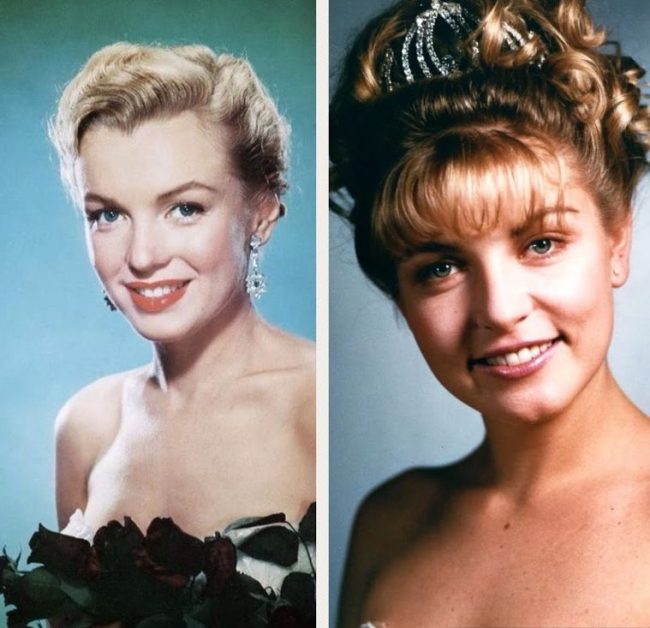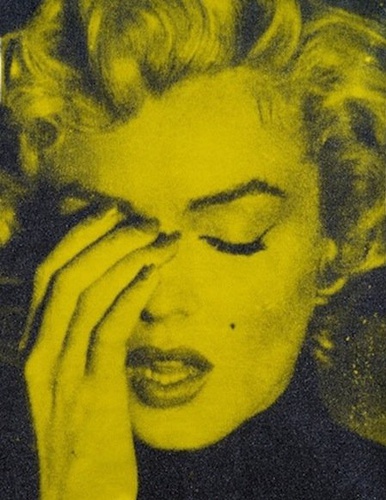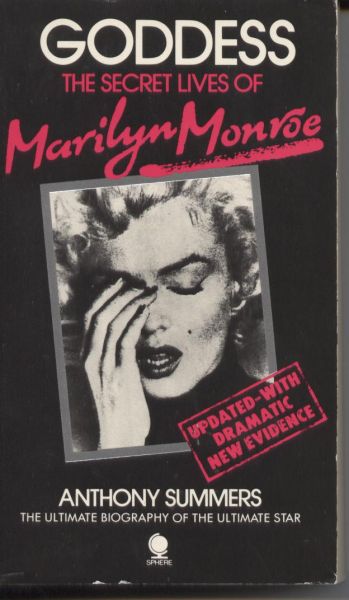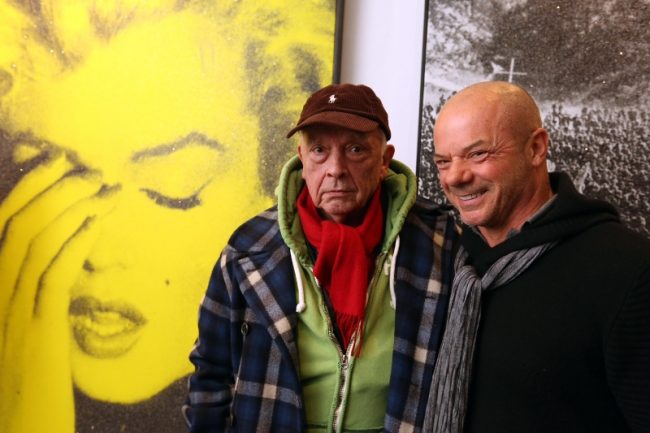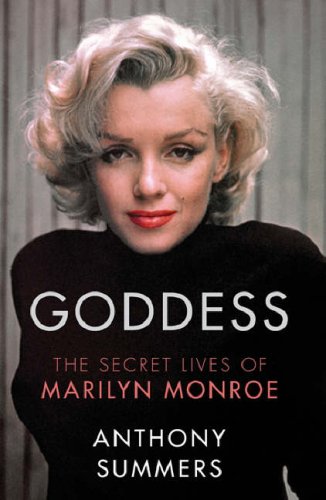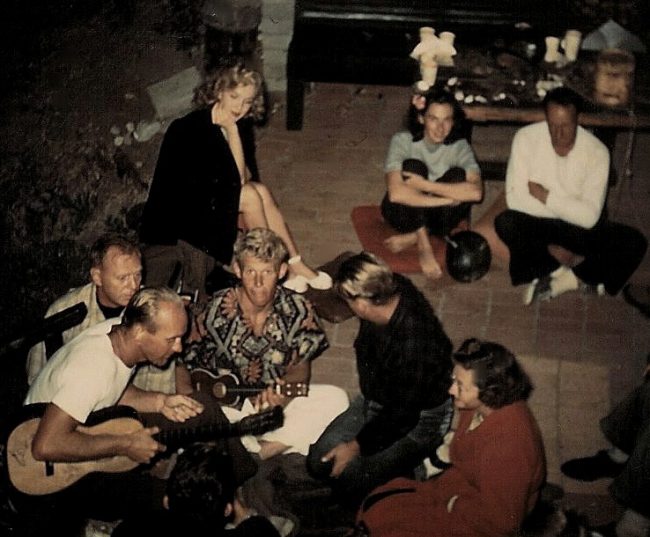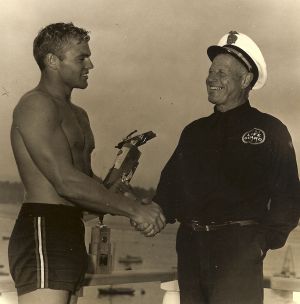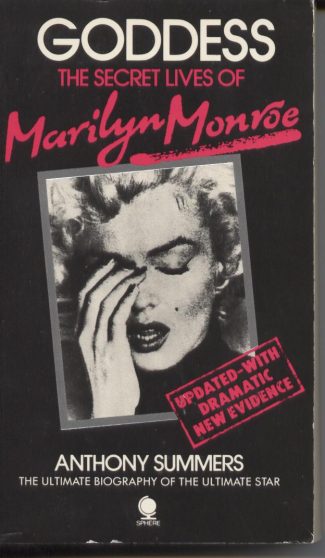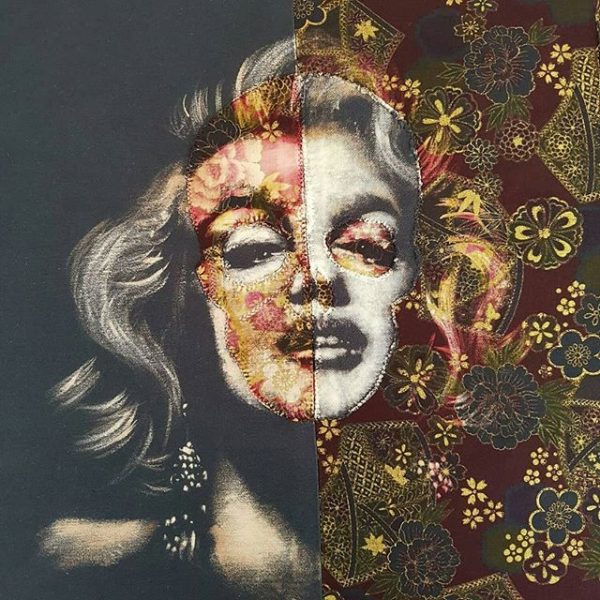
Artist Pam Glew has merged Marilyn with a Norse goddess in Dark Tales, a solo exhibition at The Art of Protest Gallery until July 31, as Charles Hutchinson reports for York Press.
“Glew, who lives in Brighton with her family and has a studio in her back garden, is best known for her distinctive paintings on fabric, using dye and stitch to paint, deconstruct and distress vintage materials in her own style of painting.
This summer she comes to York with a show that blends the mythology that filled Glew’s life growing up in North Cornwall as ‘a weird grungy kid with a sketch book and a love of music’ with the influence of her first visit to York in 2017.
‘I was inspired by York’s Viking past woven throughout the city, so I used Norse mythology as the nucleus for the show,’ she says. ‘The strong Norse goddesses featured include Hel, goddess of the underworld; Freyja, goddess of sex, fertility, war and wealth; Nott, goddess of night, and Skadi, goddess of the hunt and winter.
‘While researching, I was struck by how balanced the portrayal of women seemed to be; they are both light and dark, dangerous and caring, and not in any way superficial. The multifaceted trend of the gods, whereby they are both hard and soft, runs through the representational paintings in my solo show.
Hel, for example, is an entertainer to the dead; she is half beauty, half skull, and is painted on a split skull textile applique using ornate Japanese gold-printed fabric and calico.’
Glew re-imagines Norse goddesses as screen stars, Hel becoming Marilyn Monroe and Lofn, goddess of forbidden love, being transformed into Rita Hayworth, while Britannia takes the form of Elizabeth Taylor.”
